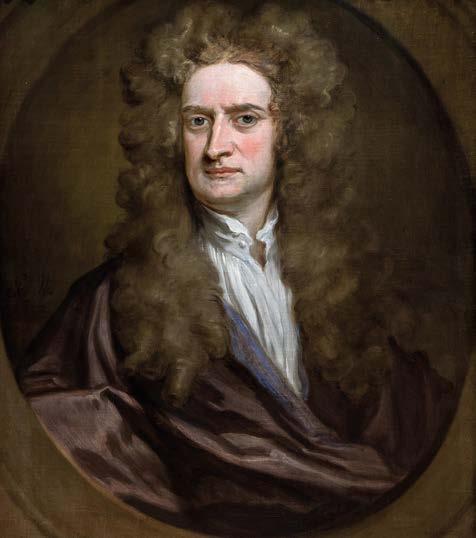
12 minute read
Sea, sand and (sometimes) sun: the great British seaside holiday has been a much-loved and ever-evolving tradition since Victorian times

Retail chaos, confusion and even riots had been predicted. But when Britain finally adopted decimal coinage in 1971 the transition proved surprisingly smooth. Fifty years on, with many people having known nothing different, you can be forgiven for wondering what all the delays and fuss had been about.
Proposals for decimal coin systems had been made in Britain as far back as the late 17th century – Sir Christopher Wren was one notable fan – and a decimal lobby in the Victorian era had managed to secure the introduction of a florin (worth one-tenth of a pound) in 1849. But it took until the 1960s, with Britain in danger of being the only major country in the world without a decimal currency, for the government to decide to replace the centuries-old money system based on 12 pennies to the shilling and 20 shillings to the pound with the simpler system of 100 pennies to the pound and denominations of 5p, 10p, 50p and the like. Intensive preparations, publicity campaigns and the phasing in of new coins culminated in ‘D Day’, or Decimal Day: 15 February 1971.
Of course, coins have never simply been about their value as money and Britain’s deep-rooted attachment to its pre-decimal system highlighted how much coins reflect a nation’s sense of itself, its culture, technology, power struggles and beliefs.
Minting (manufacturing coins) in Britain began around the end of the 2nd century BC, was largely put on hold during Roman rule, and got going again with the appearance of gold coins around AD 630, followed by silver ‘sceattas’ – the first English pennies. Alfred the Great silver pennies c.880, bearing a stylised portrait of the king and explicit ‘Londonia’ monogram, are often taken as a convenient start-point for the story of The Royal Mint.
The London mint was one of many around the country – more than 70 existed in the reign of Aethelred the Unready (978–1016) – but by the time of Henry VIII
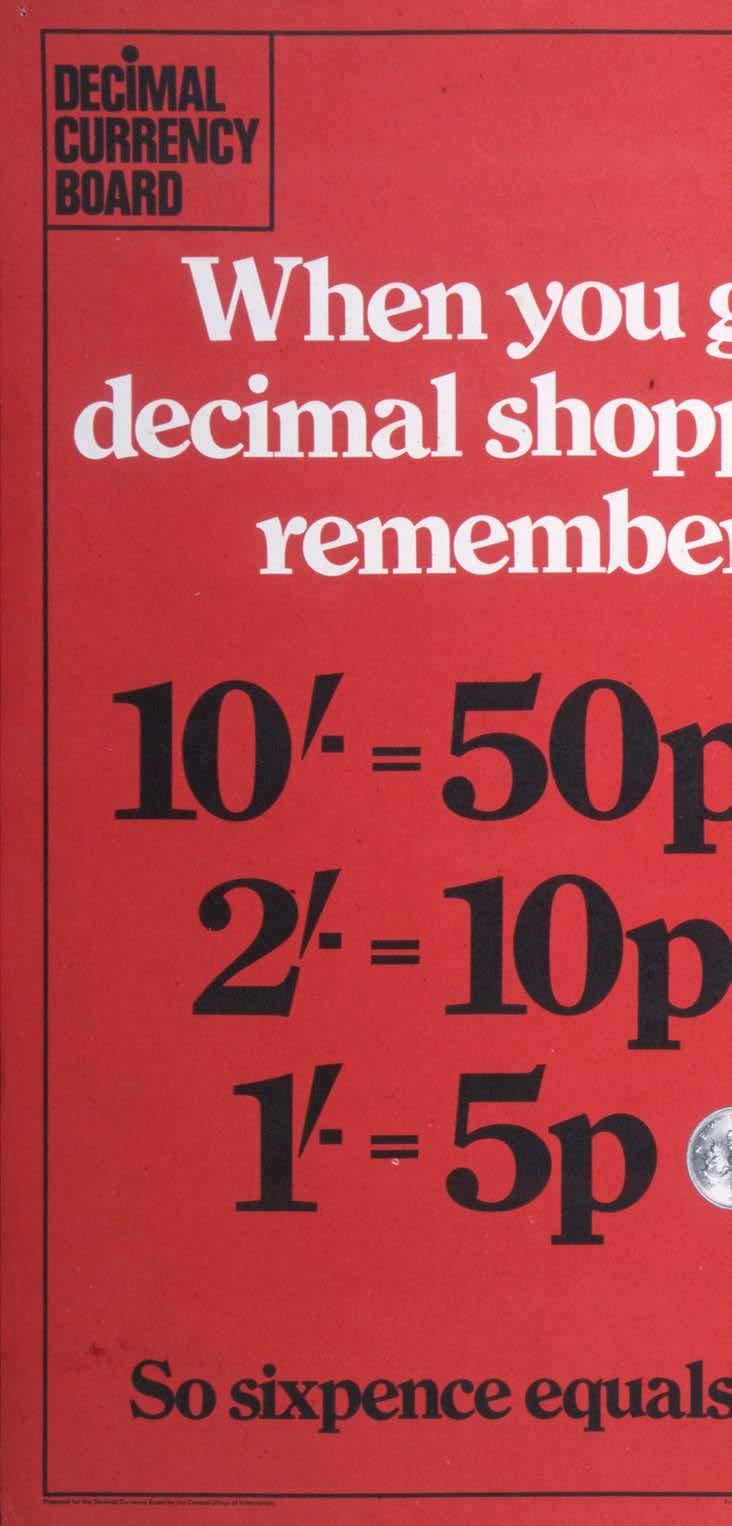
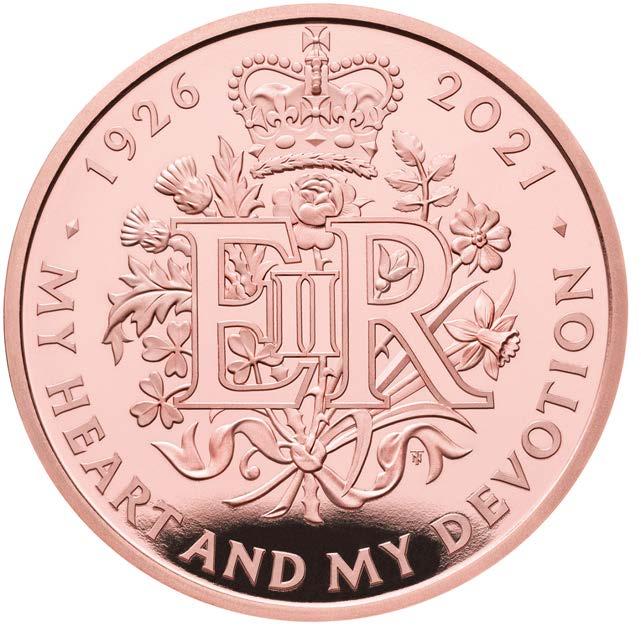
ACTIVE MUSEUM/ALAMY/THE ROYAL MINT MUSEUM/CC BY-ND 2.0/WWW.CREATIVECOMMONS.ORG/FLICKR/BANK OF ENGLAND/MATT CLAYTON © IMAGES: Top left: Sir Isaac Newton, Master of the Mint Left: The Decimal Currency Board oversaw the phasing in of decimalisation with publicity campaigns Right, top to bottom: Inside the Bank of England; a 50p coin celebrating the 50th anniversary of Decimal Day; the 95th birthday of Her Majesty the Queen will be celebrated with a new £5 coin
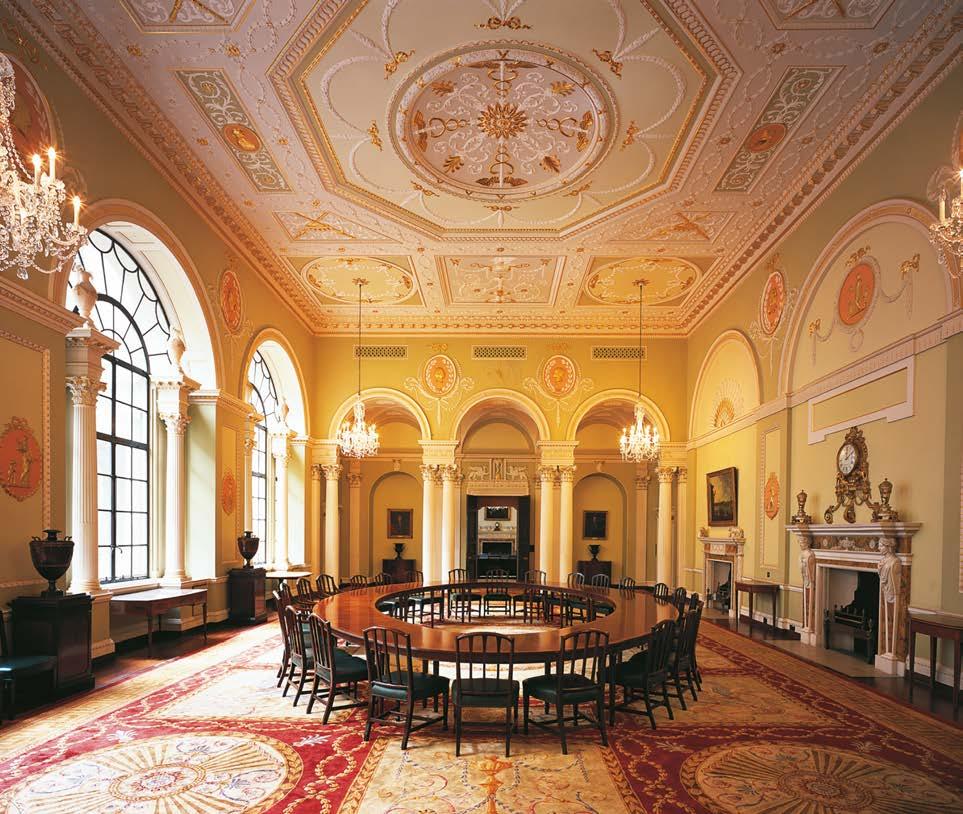
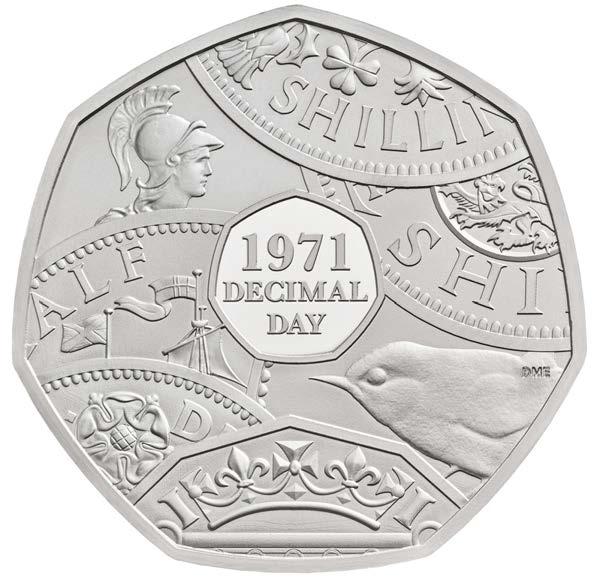
it was normally the only mint in operation: a noisy, hot, dangerous sprawl of workshops, melting houses and mint officials’ lodgings within the safety of the Tower of London. The operation stayed here until the need for more space to accommodate new steam-powered machinery prompted a move, from 1810, to Tower Hill. Purpose-built quarters at Llantrisant, ten miles north of Cardiff in South Wales, opened in 1968 to cope with the extra work of decimalisation, and production fully decamped to Llantrisant in 1975 where The Royal Mint, a government-owned company, continues to operate.
Britain’s much-loved pre-decimal coins developed over the course of centuries. Early silver pennies – 240 weighed a pound – gained a deserved international reputation during the Norman era for their consistency and reliability, and it’s thought that the term ‘sterling’ originated as an adjective (from Middle English ‘ster’ meaning strong or fixed) that was applied to these pennies before the range of denominations grew and sterling came to represent the currency as a whole.
At first, if you needed to pay less than a penny for something you simply cut it, but by the 13th century halfpennies and farthings (‘fourthings’) were among regular coins. It was 1489, during the reign of Henry VII, before the much higher-denomination pound coin developed: in the form of a dazzling gold sovereign, its name and appearance trumpeted the power and majesty of the new Tudor monarchy. The silver shilling or testoon also appeared during Henry’s reign, one of the first English coins to bear a realistic portrait of the monarch.
Tudor crowns and half-crowns followed and in Edward VI’s reign silver sixpences and threepences were issued. Sixpences would become one of the best-loved British coins, tucked into a bride’s shoe or Christmas puddings for good luck, and ‘Save our Sixpence’ campaigns prior to decimalisation kept the coin (equating to decimal 2.5p) in circulation until 1980.
There were constant battles against counterfeiting and clipping (shaving precious metal from the edges of coins), and even royalty got up to occasional skulduggery. Henry VIII, ever desperate for funds, debased coins with copper – earning him the nickname Old Copper Nose (rubbed coins revealed the base truth beneath the shiny surface of his portrait). Henry’s daughter Elizabeth I restored order by melting down and replacing all old coins with new. Equally zealous in upholding standards, Sir Isaac Newton, Warden and then Master of the Mint (1696–1727), would don disguises and mix with seedy informants in taverns in his (very successful) pursuit of counterfeiters.
Following the introduction of machine-milled edges to coins and the use of cheaper alloys in place of gold and silver, clipping would lose its appeal, and today The Royal Mint employs all manner of sophisticated anti-counterfeiting technology to maintain the integrity
HISTORIC ROYAL PALACES/THE TRUSTEES OF THE BRITISH MUSEUM/AGEFOTOSTOCK/ALAMY/ASHMOLEAN, UNIVERSITY OF OXFORD © IMAGES:
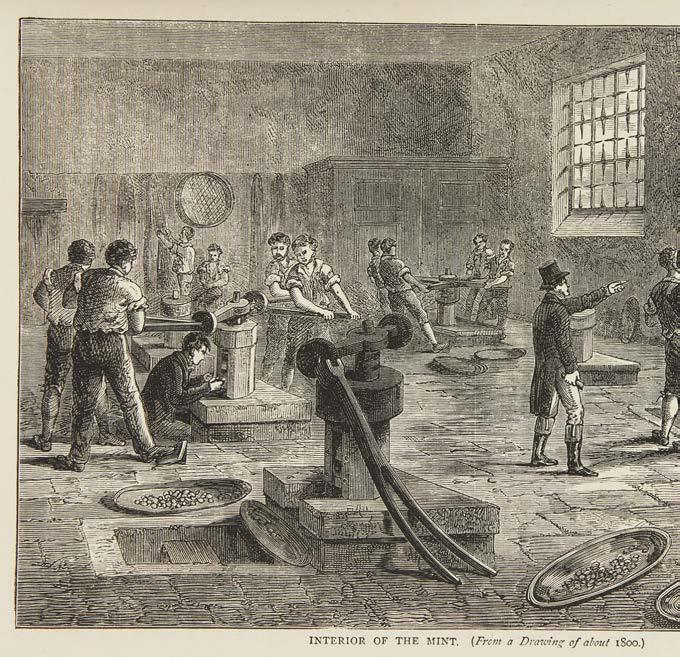



SEPTEMBERLEGS/PUBLIC DOMAIN SOURCED/ACCESS RIGHTS FROM ART COLLECTION 2/ © IMAGES: THE PRINT COLLECTOR/EYE35.PIX/ALAMY
Clockwise, from top left The London mint in the Tower of London, c.1800; a penny produced in 1903 that was later defaced by the suffragettes; a silver testoon bearing a portrait of Henry VIII; a gold coin featuring Queen Victoria

DID YOU KNOW?
l By tradition, since the 17th century monarchs are shown on coins facing in the opposite direction to their predecessor. l There have been five images of HM the Queen on coins since 1952, evolving from stylised to a more natural appearance. l The Queen’s 95th birthday is to be commemorated on a new £5 coin this year, which will bear the words "my heart and my devotion", a reference to her 1957 Christmas broadcast, the first to be televised.

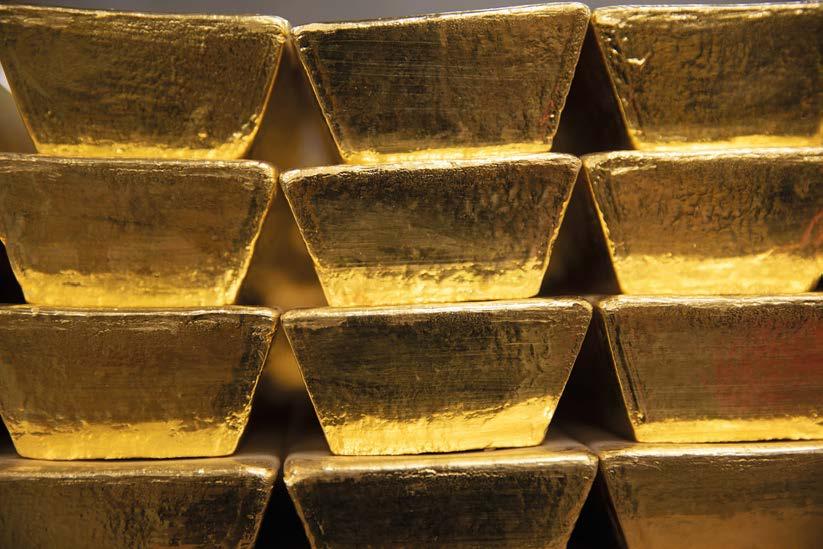
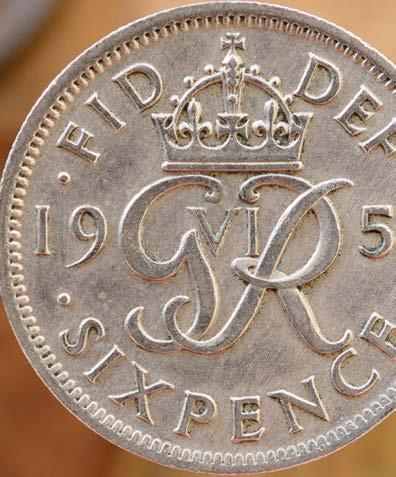
Clockwise, from top left: The most recent coin portrait of HM The Queen displayed by a Royal Mint engraver alongside her four previous portraits; the grand facade of the Bank of England; a sixpence from 1951; gold held in the Bank of England's vaults of the coins it produces. The world’s leading export mint, it makes more than 3.3 billion coins and blanks for more than 30 countries a year.
You can tour behind the scenes at The Royal Mint factory to learn about the intricate processes involved in creating coins: a breathtaking marriage of traditional handcraft skills with precision computer and machine technology culminating in dazzling showers of money. Exhibitions also feature rarities like an Edward VIII gold sovereign that, due to the abdication, never went into circulation.
From design concept to finished coin can take two to three years. The ‘constant’ is the royal portrait on the obverse (heads side), while regularly changing designs on the reverse (tails) capture images of our changing nation – over 100 feature on currently circulating coins, from heraldry to anniversary commemorations of Samuel Pepys, the Mayflower and VE Day. An enduring favourite, Britannia (personifying Britain) has appeared on coins of every monarch since Charles II.
In today’s world of contactless payments, mobile apps and the rise of crypto-currencies, the question is, will conventional coins survive? An estimated 29 billion coins are in circulation in the UK, suggesting many of us still like the jingle in our pockets, and The Royal Mint, which also makes medals and offers investments in precious metals, has a thriving coin collecting service (the modern sovereign is its flagship bullion coin). Each year customers eagerly snap up commemorative coin sets and fittingly the 2021 Annual Set includes a 50p coin celebrating the 50th anniversary of Decimal Day. Worth making a fuss about.
For more on British history, visit www.britain-magazine.com
FOLLOW THE MONEY
The Royal Mint Experience Displays tell the story of The Royal Mint, and fascinating guided tours of the Llantrisant factory reveal processes involved in creating coins. www.royalmint.com
The Royal Mint Museum An important research resource (by appointment), the Llantrisant museum boasts nearly 100,000 coins, 50,000 master tools and dies, plus other coin-related materials. www.royalmintmuseum.org.uk
The Ashmolean The Oxford Crown (1644), produced when Charles I had an HQ and temporary mint in the city during the Civil War, is just one highlight of the Oxford museum's Money Gallery. www.ashmolean.org/money-gallery
Bank of England Museum Located within the Bank of England in the City of London, the museum tells the story of the bank since its foundation in 1694, from handwritten bank notes and wooden tally sticks to electronic systems. www.bankofengland.co.uk/museum
The British Museum The Citi Money Gallery (Room 68) explores the different forms of money through 4,000 years. www.britishmuseum.org
Tower of London The ‘Coins and Kings’ interactive exhibition delves into life at the mint c.1279–1812 and how coins reflect power struggles and politics. www.hrp.org.uk/tower-of-london
Museum on the Mound Unlock the story of the Bank of Scotland from its foundation in 1695 at this Edinburgh museum, and have a go at cracking a safe. www.museumonthemound.com
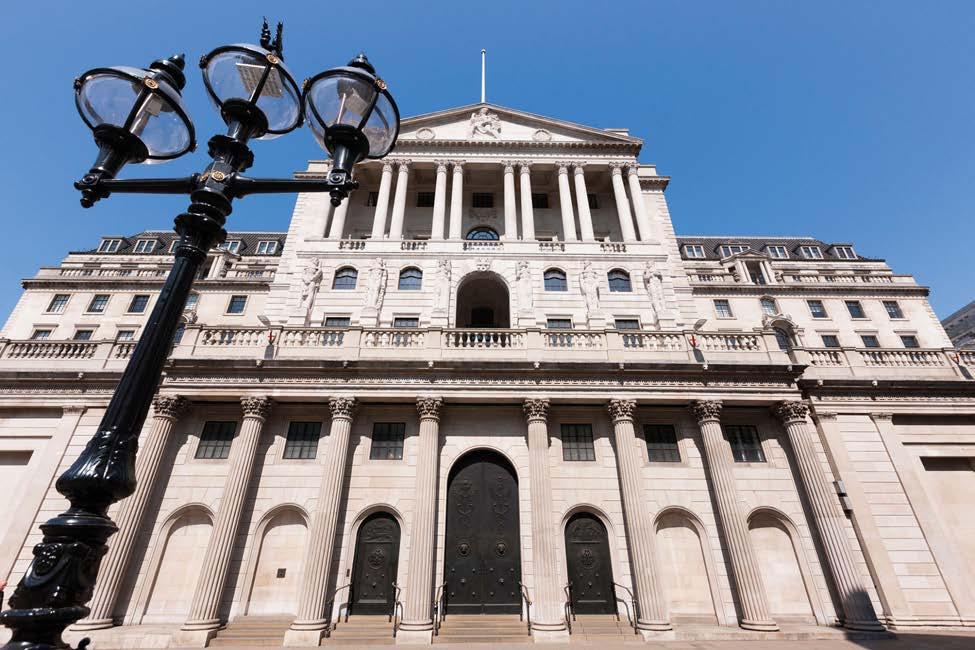
JUSTIN TALLIS/AFP VIA GETTY IMAGES/LEONID ANDRONOV/WRESPHOTOGRAPHY/DAVID GEE 4/ALAMY/C BY-ND 2.0/ © PHOTOS: K OF ENGLAND/MATT CLAYTON WWW.CREATIVECOMMONS.ORG/FLICKR/BANK OF ENGLAND
WIN A Prize can be taken any time before June 2022
GREAT BRITISH HOLIDAY
Your once-in-a-lifetime trip includes: ● Free international flights (if applicable) ● One-night London stay ● Two-night stay in Edinburgh ● Visit to Edinburgh Castle ● Tickets to Blenheim Palace ● A night in a Cotswolds hotel ● West End tickets with dinner

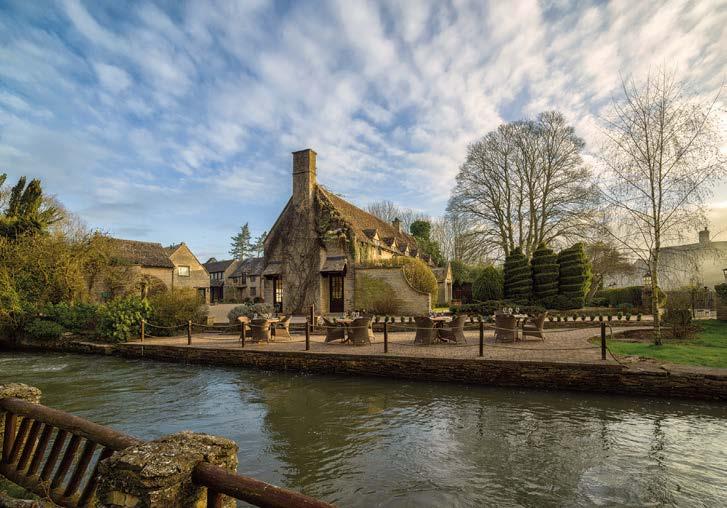
Enter our competition for your chance to win a holiday in Britain for two worth up to £5,000, including free international flights
What would your dream holiday to Britain include? A fi ve-star stay in London and tickets to a West End show? A trip to historic Edinburgh? How about a stay in the Cotswolds, including a visit to one of Britain’s fi nest stately homes? Well, with our Great British Holiday competition, you can win all of this and more.
London luxury Starting with free fl ights (for overseas entrants), the winner and their guest will travel to London for a luxury one-night stay at the Athenaeum, a fi ve-star hotel in the heart of Mayfair – just a short stroll from Buckingham Palace, Piccadilly Circus and the Royal Parks.
Your visit will also include tickets to a top West End show of your choice, with a lavish three-course meal with wine at Prezzo to make your night one to remember.
Historic Edinburgh Next, our winner and their guest will head to Edinburgh for a stay at the luxury Radisson Collection Edinburgh, located on the famous Royal Mile, with stunning views of the Old Town. During your stay you’ll visit the iconic Edinburgh Castle, followed by a special three-course dinner. The charming Cotswolds To conclude your trip, it’s time to escape to the countryside to visit one of Britain’s fi nest stately homes and the birthplace of Winston Churchill: Blenheim Palace.
Accommodation for the night will be at Minster Mill, a glamorous and luxurious hotel on the banks of the River Windrush in the historic village of Minster Lovell.
After a full English breakfast, you can take advantage of the hotel’s top-class facilities – from its spa to its croquet lawn – or explore your surroundings: the idyllic Oxfordshire Cotswolds are home to some of England’s most beautiful villages.
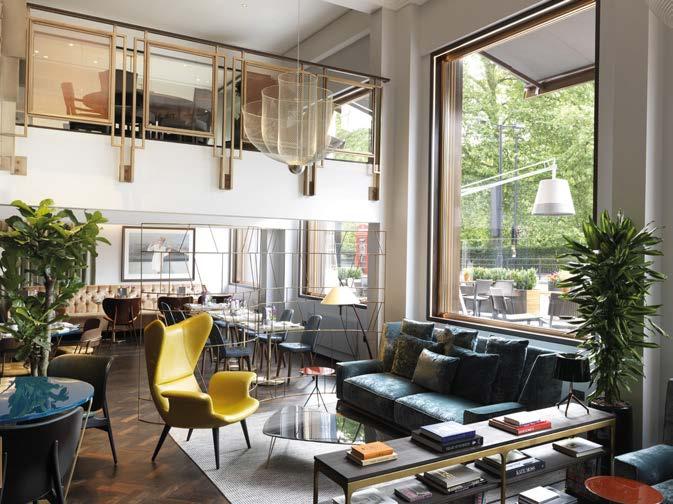


HOW TO ENTER
Go to www.chelseamagazines. com/GBH2021
or fill in the coupon on the right with the answer to the question:



Question: Which famous Brit was born at Blenheim Palace? a) Isaac Newton b) Queen Victoria c) Winston Churchill

© SHUTTERSTOCK PHOTO: TERMS AND CONDITIONS Closing date for entries is 31 July 2021. The winner will be announced on www.britain-magazine.com on 7 August 2021, and the holiday can be taken between 1 September 2021 and 31 May 2022, subject to availability. For full terms and conditions, go to www.chelseamagazines.com/GBH2021 Two annual tickets to Blenheim Palace, one of the country's finest stately homes and the birthplace of Winston Churchill. www.blenheimpalace.com Two-night stay for two including breakfast at the Radisson Collection Edinburgh on the city's Royal Mile. www.radissonhotels.com

One-night stay for two at The Athenaeum, a five-star hotel in London's Mayfair district, near Buckingham Palace. www.athenaeumhotel.com
One-night stay for two at Minster Mill, a luxurious Cotswolds hotel near Blenheim Palace. Includes breakfast. www.minstermill.co.uk Two premium theatre tickets, plus a three-course meal at Prezzo for two with wine from Buyagift, the UK’s leading provider of experience days. www.buyagift.co.uk
Visit Edinburgh Castle, the Scottish capital's unmissable historic attraction, followed by a three-course dinner for two from go-to gift experience company Red Letter Days. www.redletterdays.co.uk
SEND YOUR COUPON TO: US readers – Great British Holiday Competition 2021, BRITAIN, PO Box 207, Des Moines, IA 50301, US UK and ROW – Great British Holiday Competition 2021, BRITAIN, Jubilee House, 2 Jubilee Place, London, SW3 3TQ, UK
My answer:
Name:
Address:
Postcode:
Tel no:
Email:
Terms and conditions apply. For full details go to chelseamagazines.com/terms-and-conditions Please tick here if you subscribe to BRITAIN ■ Please tick if you are happy to receive relevant information about new products or services from our competition partners via email ■ , post ■ , or phone ■ , and/or The Chelsea Magazine Company via email ■ , post ■ , or phone ■
This image: The White Tower and castle walls at the Tower of London Right: Joint Chief Curator at Historic Royal Palaces, Tracy Borman





